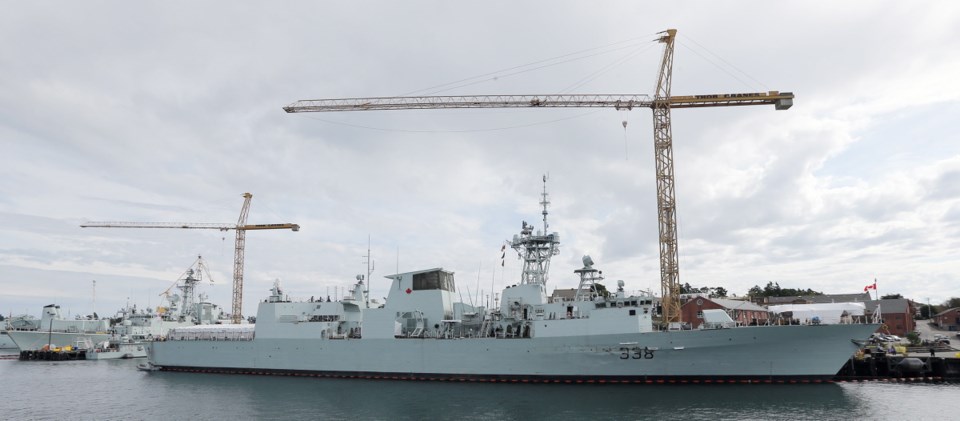For years, all eyes have been on the sewage treatment plant as the most expensive capital project on southern Vancouver Island.
Now, quietly, the jetty reconstruction project at CFB Esquimalt, with a budget of $781 million, has surpassed the sewage treatment plant and the Johnson Street Bridge replacement as the biggest infrastructure development in the region.
Esquimalt Mayor Barb Desjardins is optimistic about the economic benefits the project will bring to Greater Victoria. “When you add up all the infrastructure dollar expenditures on all the projects that are going on in our tiny region, it’s amazing,” she said.
Erik Sehn, Camosun College's dean of trades and technology said major projects like the jetty reconstruction provide great job prospects for trades students, especially those in the Marine and Metal Trades Centre. "When you consider that on the South Island you see the economy, especially in the construction industry, really starting to heat up... what you have is an industry which is likely going to draw upon new employees in order to meet the demand," Sehn said.
"That creates opportunities for our apprentice and foundation-level students. Our hope here with all of these big projects is that employers will take advantage of this skilled group of people and say 'yes we will sponsor you as our apprentice,’" he said.
However, Alan Fletcher, board chair of the Vancouver Island Construction Association, said while a project of this size is great for construction workers, it can drive up costs for smaller construction firms.
With a limited construction workforce already stretched thin across major projects on Vancouver Island, including the two hospitals in Campbell River and Courtenay and the John Hart dam upgrade, Fletcher said it becomes harder for smaller contractors to find staff.
“Within our community what happens is the smaller projects are now competing for the same workforce.”
Rick Gudz, a site manager for Defence Construction Canada, the company responsible for selecting the contractor, said the jetty project is big enough to attract international and national companies but subcontracting could benefit local industries, from concrete to mechanical firms, to environmental surveyors.
“On a job this size, it touches so many different industries,” he said.
The jetty replacement budget has soared from the $430 million to $530 million initially estimated when the federal government announced the project in 2013, to $781 million, eclipsing the $765-million sewage treatment plant and the $105-million Johnson Street Bridge replacement.
The Department of National Defence said the price increase is due to higher construction costs and increased contingency to manage risks in the project.
A $72 -million contract has been issued to demolish the existing B jetty at Dockyard and site preparation. When this is complete, B jetty will be rebuilt, followed by the demolition and rebuilding of A jetty.
“We’re doing that in a phased approach to mitigate the impact on the operational fleet,” said CFB Esquimalt base commander Capt. (Navy) Steve Waddell.
“Certainly it will be a bit disruptive to our program, but it will not negatively affect our ability to support the fleet.”
The existing jetties, built in the Second World War, are made of treated wood and are well past their service life.
Waddell said there are load restrictions on the jetties, which means they cannot support some cranes or heavy vehicles used to unload ships.
“That restricts your ability to move cargo, supplies, different things you would want to load onto ships that are preparing to go on deployment or coming back,” Waddell said.
The new A and B jetty will be 307 metres and 277 metres long, respectively, compared to the existing jetties which are 185 metres and 190 metres.
Berthing space will increase by about a third to accommodate the Halifax-class frigates as well as new vessels that are set to join the Pacific fleet beginning in 2018.
The jetty decks will be about 1.2 metres higher to account for possible sea level rises due to global warming.



